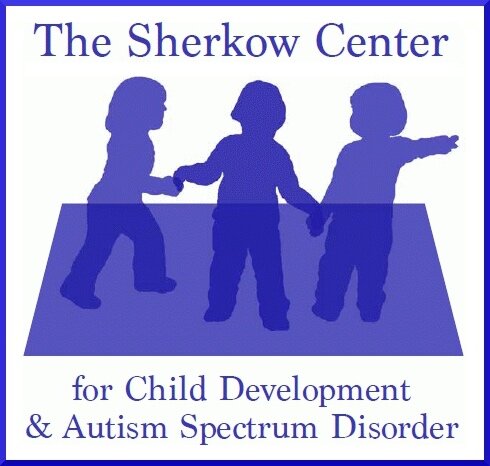On April 24th, The Sherkow Center staff attended a workshop presented by Dr. Deborah J. Gruber at The Shema Kolainu School. This workshop addressed the benefits of practicing yoga for atypically developing children, specifically those with autism.
At The Sherkow Center, we had already discovered the need for beginning each Spark group with a consistent activity in order to help our ASD youngsters transition from the waiting room into the play-space. By implementing a few minutes of yoga poses as a warm-up, we provide a consistent and calming activity as a prelude to the session’s various scheduled activities.
Little did we know, there are a number of additional benefits to practicing yoga! As with other physical activities for children with autism and developmental delays, it provides much-needed predictabilitythat engages the body and all of the senses.
It is already known that yoga helps cultivate consciousness of one’s own behavior. In addition to the mental and physical health benefits of yoga, various yoga techniques also prompt the development of crucial skills, namely those that are communicative and social in nature. Improvements in communication and sociability influence the ability to form healthy relationships, which a child with autism may benefit from.
Yoga Tips for Autism Spectrum Disorder clients
Dr. Gruber introduced relevant and useful behavioral strategies such as utilizing physical prompts, picture schedules, video modeling and positive reinforcement, which can be used during physical activities such as yoga.
While teaching yoga to children with autism, it is important to be aware of the motor limitations of each child. Sometimes, a seemingly “easy” position can be challenging and frustrating for a child. Breaking down the position into a sequence of simple movements will prevent the child from being overwhelmed and allow him or her to follow instructions and stay on task. This also provides a chance to work on and improve the child’s attention span, and to provide an opportunity for imitation.
Video modeling provides a visual demonstration of the position so that the child can process the sequence of movement before practicing and achieving the proper form. Once the sequence of movements has been processed, children can be paired up with peers and take turns demonstrating what they have learned from the following video.
The instructor should notice and praise positive behavior [as Dr. Gruber says “catch’em being good”.] This will increase the probability that a good behavior or position might “stick” and occur again.
Depending on the level of motor coordination of the child, you can adapt your approach by introducing “pretend play skills.” For instance, asking the child to pretend to be a literal “dog”or “tree” will reinforce the child’s mental representation of the pose’s name, allowing him to feel free to do his own version of the position. This creates the opportunity for some lighthearted play and bonding between the instructor and child, as well as for some interesting interpretations! The instructor should imitate the child’s own portrayal, before guiding them into a traditional position with a Downward Dog position for instance.
The use of music during the practice of yoga may be useful for a group-wide sing-a-long, as well as for providing a lighter, more enjoyable environment than an over-stimulating one.
Finally, another way to engage children in developing awareness of their body is to play “Yogi Says,” aversion of the traditional “Simon Says.” This helps children practice body part identification as they work with each yoga pose, making them concentrate on their own bodies as well as the body parts involved in each sequence of the movement.




